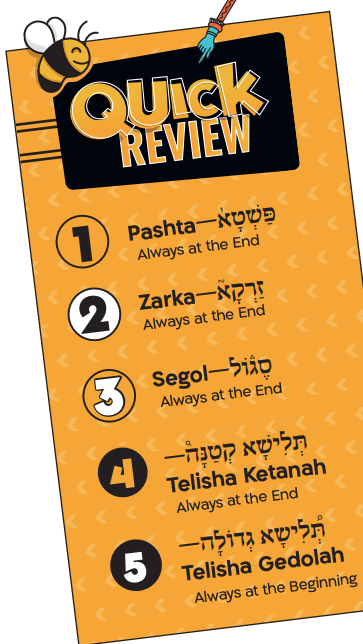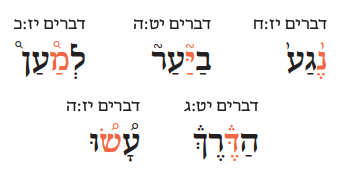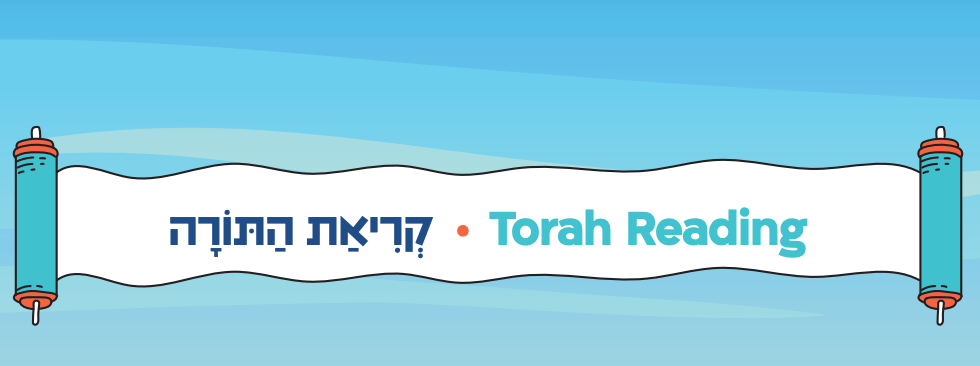Ilustration Credit: Elad Lifshitz, Dov Abramson Studio

We have learned all the notes that you will find in the Torah—great job! If you go back and review, you will see that almost all of the notes show up on the accented syllable in the word. In fact, part of the way you can figure out how to pronounce a word in the Torah is to look for the note, which will tell you which part of the word to say a little bit louder and stronger.
But we learned about five notes that always appear at either the beginning or the end of the word, even if the accent is in a different place.
Here’s a quick review:

פשטא֙—Pashta
Always at the End
זרקא֘—Zarka
Always at the End
סגול֒—Segol
Always at the End
תלישא קטנה֩—Telisha Ketanah
Always at the End
֠תלישא גדולה—Telisha Gedolah
Always at the Beginning
This can be tricky for people learning Torah reading, or just for anyone who wants to use the notes to help them pronounce everything correctly. That’s why many printed versions of the humash double these notes. To make it easier for us, one of the notes goes where it is supposed to—at the beginning or the end—and the other goes on the accent. Our parashah has examples of all five of these notes that can be doubled. Check it out:

These aren’t actually double notes! The real note is at the end or the beginning (we showed it in black), and the extra mark (we showed it in pink) is just there to help you out so you don’t say AH-su instead of a-SU. If you were ever wondering why these notes sometimes double up—mystery solved!
-------------------
-------------------





